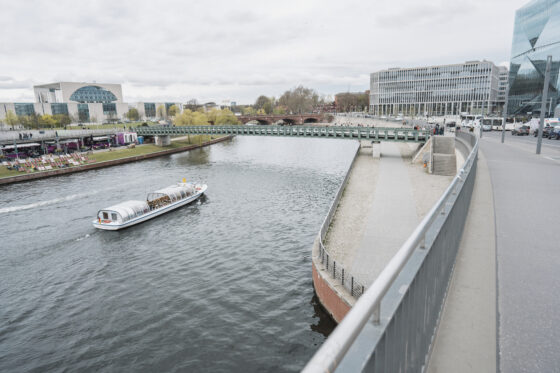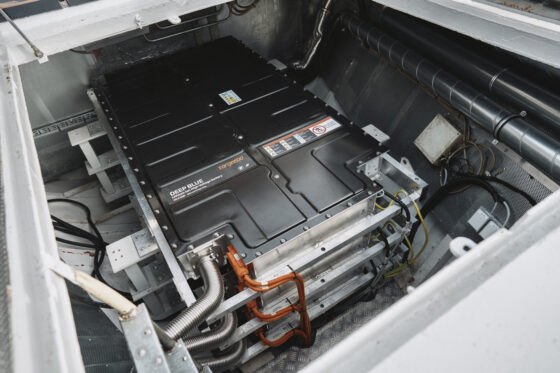
Berlin’s first retro-fit electric sightseeing boat

Oranje Nassau, a 20-metre, 55-passenger sightseeing boat and water taxi operating on Berlin’s waterways was recently put back into service after its diesel engine was replaced with a fully integrated all-electric propulsion system by Torqeedo.
The Torqeedo Deep Blue 50i electric drive is powered by three Deep Blue batteries with 120 kWh capacity, which provide energy for a full eight-hour day at operating speeds, recharging from shorepower connections overnight at dockside, according to the electric drive developer.

The boat, originally built in the 1990s, now glides through the water with no diesel fumes, no oil sheen on the water, and no engine noise – just a quiet hum as the vessel accelerates.
Managing director of Berliner Wassertaxi, André Siebach, is already making plans to convert the other two tour boats in his fleet with the same Torqeedo propulsion package.
Siebach points out that the comparatively light and streamlined canal boats are perfect candidates for conversion to electromobility.

“For the Oranje Nassau project, we were looking for a single supplier who could reliably deliver motors, batteries, and energy management systems for high-voltage systems. And that’s exactly what we got from Torqeedo, which offered to supply a complete system with industrial quality components, system integration, and project management,” says Siebach.
“It was nice to deal with the same people from the first concept sketch to installation and sea trials,” Siebach adds.
Axel Büchling, Torqeedo’s project sales manager, says: “Berlin’s urban ferries are a perfect fit for electric propulsion since they travel relatively short distances and require a limited amount of propulsion energy per day. Torqeedo was able to draw on our considerable experience in this sector, having installed electric, solar and hybrid systems on scores of inland and coastal craft in other metropolitan areas around the globe.”

The German capital has eleven navigable waterways totaling 200 kilometres in length, including the Spree and Havel rivers and the Landwehr Canal, and there are more than 40 companies active on the city’s urban waters.
Like many other cities, Berlin has invested heavily in electromobility in recent years. In the summer of 2022, the first 200 charging stations for electric autos will be installed in streetlights, with thousands more to follow. Until now, however, the boat traffic on the Spree River, the city’s oldest traffic route, has lagged behind other transportation modes in their embrace of electromobility.
“We can achieve a long-term improvement in the climate on our waterways,” says Berlin’s mayor Franziska Giffey. “Berlin wants to be a pioneer here.”
According to the Berlin Senate Administration, around ten per cent of all particle emissions from traffic originate from the vessels that ply the city’s waterways – inflicting the same harm to air quality and human health as 120,000 cars.
“In the past, you got really dirty when you were working,” says Stephanie Merkel, the vessel’s skipper. “And now I don’t go home in the evening with my head throbbing.”
Torqeedo will be at Seawork, stand B23, and Electric & Hybrid Marine World Expo ( stand 1170).
All images courtesy of Torqeedo/Tim Marcour.
